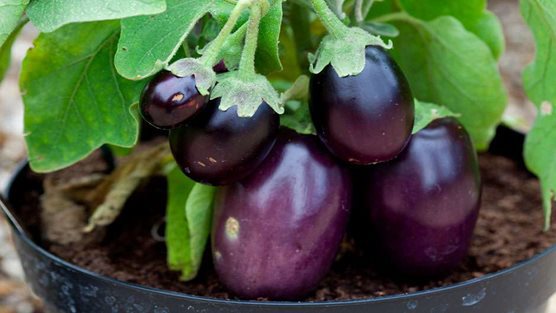How To Grow Eggplants

Eggplant is a member from the Solanaceae family that incorporates various harmful weeds like Deadly Nightshade, so for many years it was considered to be poisonous. In the end the daring started to have a go at eating eggplant. In any case, it’s just been over the most recent 100 years that eggplant has been broadly acknowledged as a vegetable. The large-fruited varieties probably originated in India while the smaller eggplants are thought to have come from China.
How to plant eggplants
Eggplants can be started from seed indoors 10 to 12 weeks before their optimal planting out date. Be that as it may, healthy transplants may be a better approach unless you want a large harvest. In northern gardens where the growing season is short, it is imperative to utilize early-ripening eggplant varieties and start with vast transplants. Get the eggplants off to a fast start by protecting them with “Wall O’ Water” plant protectors to shelter the tender plants from cold, dry northern winds that are predominant in the early spring and in the summer.
Hold up until night temperatures are reliably in the 60’s before setting out eggplant transplants. Despite the fact that the plants can recoup from a couple of frosty evenings, they may wind up plainly stunted or susceptible to disease organisms.
Make sure to provide good drainage and a rich natural soil, and make sure to give eggplants a lot of space. Most assortments will require 18 to 24 inches between plants and a few feet between rows. Dark plastic mulch can help eggplants get off to a quick start in the spring when temperatures are minimal. Cover the plastic with light-hued straw mulch to diminish the development of warmth in the late spring and summer. Try not to be hesitant to fertilize the eggplants since they are heavy feeders. What’s more, water eggplants completely during droughts.
Care
Start by working lots of compost into the soil, plus 2 to 3 pounds of a complete fertilizer like 15-5-10 per 100 sq. ft. If you prefer, use an organic fertilizer like blood meal, well-rotted manure, cottonseed meal or bat guano.
Once the climate has warmed up enough or measures proposed to enhance soil warmth have been applied, set transplants 18 to 24 inches feet separated consecutively with lines comparably dispersed. ‘Blue Marble Hybrid’ and ‘Millionaire Hybrid’ are best for container gardening or for closer spacing. In the event that you utilize one of the dark hued mulches, it’s best to cover it later in the summer with light-hued roughage to reflect the sun’s warmth.
Old daily papers likewise make extraordinary mulch. Soak them in water just before laying them out- 8 to 10 sheets thick – and cover with hay, or dry grass clippings to hide the paper and keep it from blowing away. If you fertilize eggplants monthly use about one pound per 100 ft. of row. You can be genuinely unceremonious about sprinkling compost down the line in light of the fact that the daily papers will act as a cradle. The paper will separate and can be delved into the garden toward the end of the season.
Tips
Traditional eggplant varieties have a notoriety for building up a bitter flavor when developed under upsetting conditions. Ensure your eggplants get loads of water and fertilizer to guarantee quick development and maturity. Fortunately modern hybrid varieties are not likely to exhibit bitterness in spite of the weather. However, they will respond to good cultural practices with bushels of delicious fruit. The essential criteria for reaping eggplants is to pick them while the skins are glossy. In the event that the eggplants skin winds up noticeably dull, the seeds are starting to mature and the potential for bitterness is expanded.


